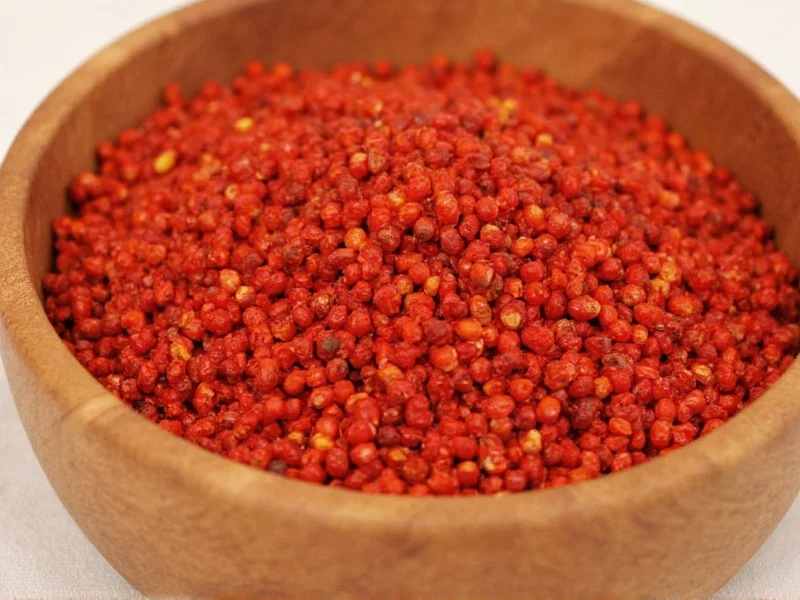Fresh cayenne pepper brings vibrant heat and complex flavor to dishes that dried alternatives simply can't match. Unlike powdered cayenne, fresh peppers offer bright, fruity notes alongside their signature spiciness, making them a versatile ingredient for adventurous home cooks. Understanding how to properly handle and incorporate fresh cayenne ensures you maximize its culinary potential while avoiding common pitfalls.
Safety First: Handling Fresh Cayenne Pepper
Before using fresh cayenne, proper handling is essential. The capsaicin that gives cayenne its heat can cause significant skin and eye irritation. Always wear disposable gloves when preparing fresh cayenne peppers. If you accidentally touch your skin, wash immediately with soap and cold water—warm water opens pores and increases absorption. Never rub your eyes after handling peppers, and consider using safety glasses for extra protection during preparation.
Preparation Techniques for Maximum Flavor
Proper preparation unlocks fresh cayenne's full potential. Start by washing peppers under cool running water. For most recipes, remove the stem and slice lengthwise. Use a small spoon to carefully scrape out seeds and white membranes (the placenta), which contain the highest concentration of capsaicin. For milder heat, remove all seeds; for maximum fire, retain some membranes.
When chopping fresh cayenne, use a sharp knife on a stable cutting board. Finely mince the pepper for even distribution in sauces and marinades. For infused oils or vinegars, slice peppers into thin rings. Remember that a little goes a long way—beginners should start with just 1/4 teaspoon of minced pepper per serving and adjust to taste.
Culinary Applications of Fresh Cayenne
Fresh cayenne enhances numerous dishes across various cuisines. In Caribbean cooking, it's essential for jerk marinades and pepper sauces. Southern chefs use it in remoulade sauces and cornbread. Asian cuisines incorporate it into stir-fries and dipping sauces. The key is adding it at the right stage of cooking to preserve its bright flavor.
| Dish Type | Recommended Amount | Best Addition Point |
|---|---|---|
| Sauces & Salsas | 1-2 tsp minced per cup | During preparation |
| Marinades | 1 tsp minced per cup | During mixing |
| Soups & Stews | 1/2-1 tsp minced per quart | Last 10 minutes of cooking |
| Infused Oils | 1-2 whole peppers per cup | Steep 1-2 weeks |
Fresh vs. Dried Cayenne: Conversion Guide
Understanding the conversion between fresh and dried cayenne prevents over-spicing. As a general rule:
- 1 teaspoon minced fresh cayenne ≈ 1/4 teaspoon cayenne powder
- 1 whole fresh cayenne (4-6 inches) ≈ 1/2 teaspoon cayenne powder
- 1/4 cup minced fresh cayenne ≈ 1 tablespoon cayenne powder
These ratios vary based on pepper heat level and personal tolerance. Always start with less than you think you need—you can add more heat, but you can't remove it once added.
Storage Methods for Fresh Cayenne
To extend freshness, store unwashed cayenne peppers in a paper bag in the refrigerator's vegetable drawer for up to three weeks. For longer preservation, freeze whole peppers in airtight containers for up to six months—they'll be softer when thawed but retain flavor. Alternatively, create cayenne-infused vinegar by packing clean peppers in a sterilized jar and covering with white vinegar, which creates a versatile cooking ingredient that lasts months.
Common Mistakes to Avoid
New users often make these errors when working with fresh cayenne:
- Not wearing gloves during preparation
- Adding too much too soon without tasting incrementally
- Cooking for too long, which diminishes fresh flavor
- Using the same cutting board for other ingredients without thorough cleaning
- Storing peppers near ethylene-producing fruits like bananas
Remember that heat perception increases over time, so wait 5-10 minutes after adding cayenne before adjusting spice levels in cooked dishes.
Creative Ways to Use Fresh Cayenne
Beyond traditional applications, fresh cayenne shines in unexpected places. Add a small slice to fruit salads for contrast, blend into smoothies for metabolic boost, or incorporate into chocolate desserts for sophisticated heat. For a quick flavor enhancer, steep a cayenne slice in hot water with lemon for 5 minutes to create a simple digestive tea. Home fermenters can add cayenne to kimchi or sauerkraut recipes for extra complexity.











 浙公网安备
33010002000092号
浙公网安备
33010002000092号 浙B2-20120091-4
浙B2-20120091-4